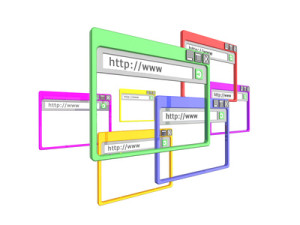Q. I already have a website. Why should I have a microsite?
A. Your business is continually evolving. As you introduce new products or services, Microsites can focus exclusively on that product or service versus the broader topic of your parent website. This gives them editorial value and search engine preference since they’re optimized for that topic’s keywords, and they can be updated without getting into writing code.
Q. What should I name the site?
A. I do keyword research based on a discrete product category or service and name the site accordingly. For example, a site that sells “circuit breakers parts”, is named circuitbreakerparts.com. From that keyword, you can mine for more terms that complement that domain name and consider selling related equipment or components under that name. This should put the site ahead of sites with a broader offering in the search listings. Go ahead, do a search for circuit breakers parts and see what you get.
Q. My site is already coming up on the first page of search engines for keywords. Can I do better?
A. There’s always room for improvement. Microsites spend more time on variations of popular keywords since the site has more content focused on subcategories. These “longtail” variations are more specific and less common than “head terms”, but add up to a larger share of search traffic. For example, trip device would be a circuit breaker head term, but “arc flash safety” and related safety topics are longtail terms related to breakers.
Q. Should I host the microsite on the same server as my parent website?
A. If the microsite is to exist temporarily such as for a promotion or pay-per-click campaign, I recommend hosting it on a different server. If the microsite is on a core product or service, I recommend hosting it as a subdomain on the same server as your parent.
Q. Where do my customers go once they reach my microsite?
A. The microsite is comprised of Landing Pages, each with content isolating on products within a subcategory of your product lines. The page matching the search engine query appears in the search engine result pages (SERPs), and the customer is taken to your microsite page rich with keyword/keyphrases. You can link to your parent site from there.
Q. Are micosites difficult to maintain?
A. If the site is built using a Content Management System (e.g., WordPress), the site can be updated fairly easily with some knowledge of html and graphic design experience. The upfront work of designing the site, keyword research, content creation, search optimization and analytics reports is more time consuming. Fresh content should be added to the microsite to increase the site’s value to the search engines indexing your site.
Don’t forget: The goal of a microsite is to perform well organically in search engines. This can save you thousands of dollars per year in pay-per-click costs for popular keywords which are now in your microsite and getting good organic search engine positioning — for free!. If you stay with PPC, you can now have your ads point to the more focused, detailed microsite landing pages and enjoy higher click-through rates for your ads based on Quality Score. Quality Score is an estimate of how relevant your ads, keywords, and landing page are to a person seeing your ad.
Build your microsite domain and carve a niche as the subject matter expert in a given product category.
Contact: 856.381.7834
Submit Contact Request
Examples of “discrete” MiroSites that perform well in search engines.
circuitbreakerparts.com
mccbucket.com
electricalcontactkits.com
switchgear.com











